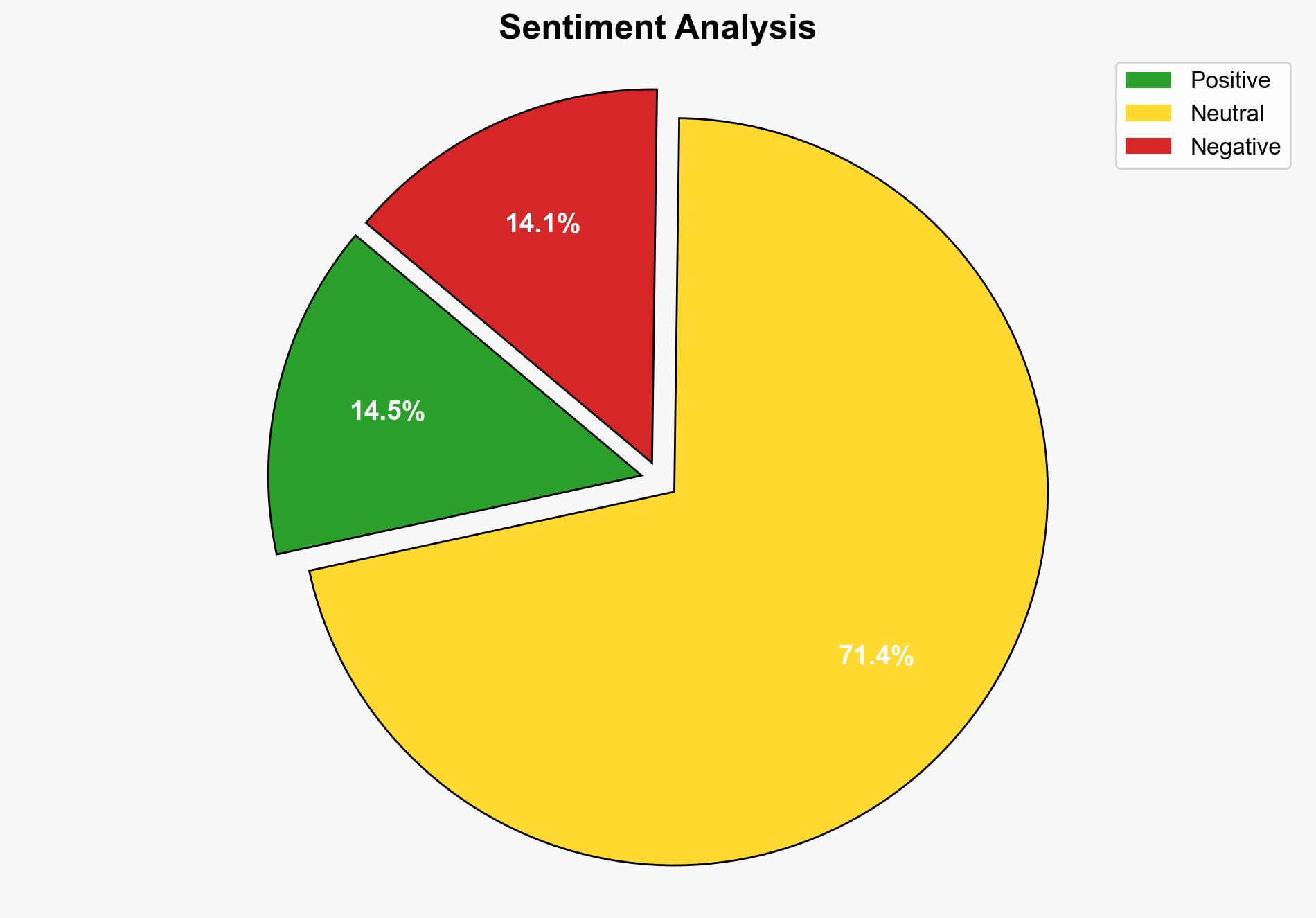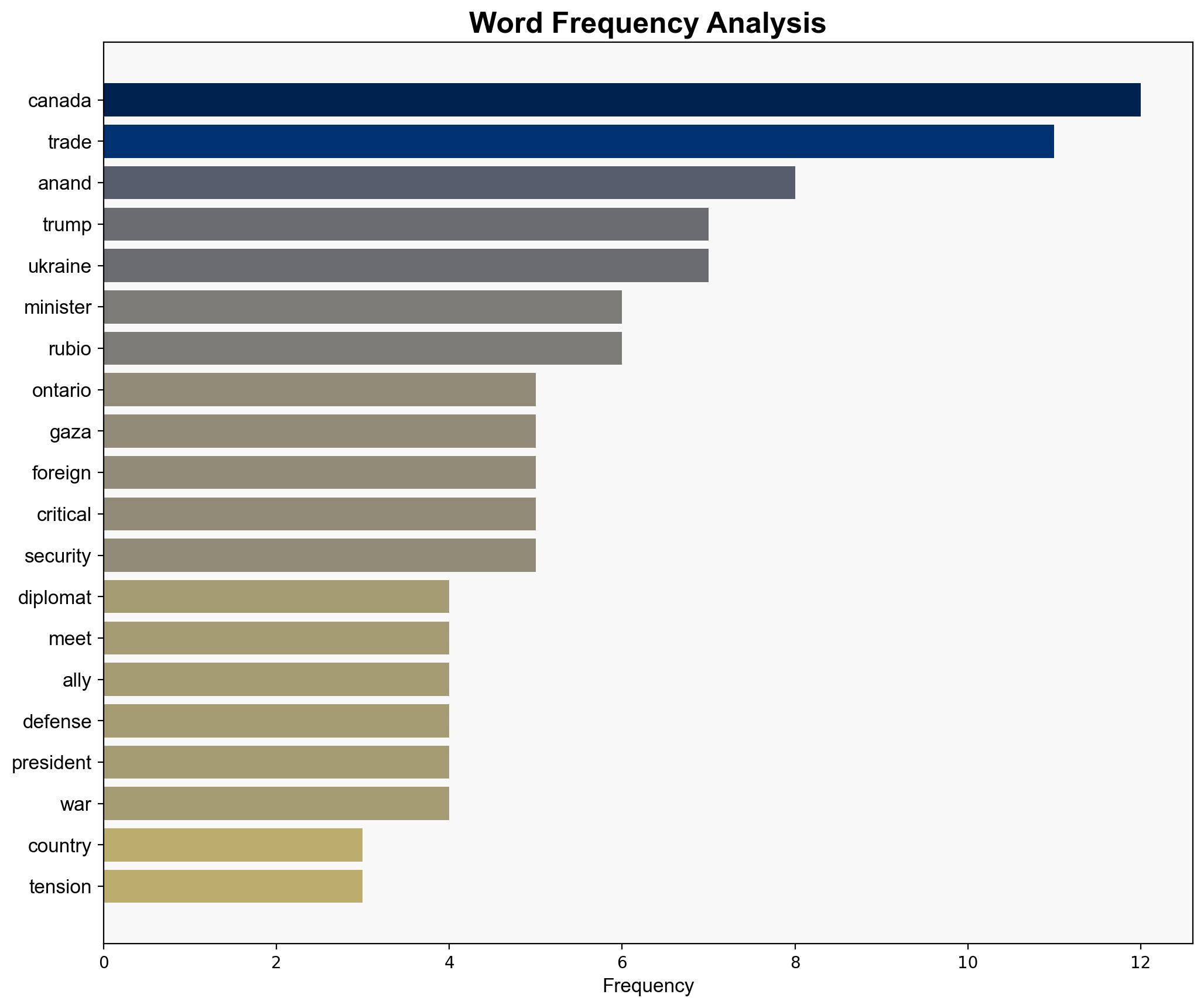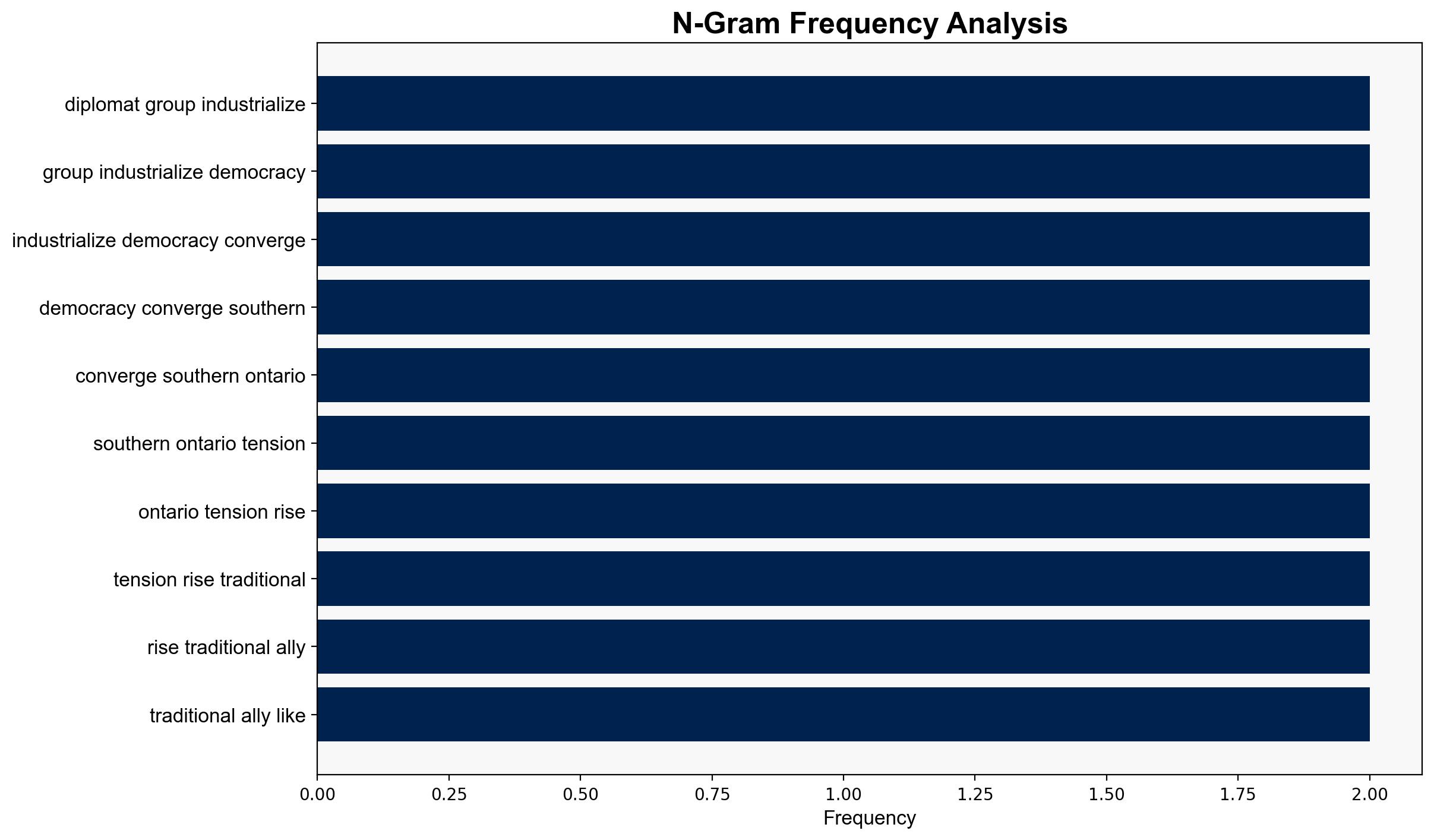Top diplomats from G7 countries meet in Canada as trade tensions rise with Trump – ABC News
Published on: 2025-11-11
AI-powered OSINT brief from verified open sources. Automated NLP signal extraction with human verification. See our Methodology and Why WorldWideWatchers.
Intelligence Report: Top diplomats from G7 countries meet in Canada as trade tensions rise with Trump – ABC News
1. BLUF (Bottom Line Up Front)
With a moderate confidence level, the most supported hypothesis is that the G7 meeting in Canada is primarily aimed at consolidating a unified stance against the trade policies of the Trump administration while also addressing broader geopolitical issues. Recommended action includes enhancing diplomatic engagement to mitigate trade tensions and leveraging multilateral forums to address geopolitical challenges.
2. Competing Hypotheses
Hypothesis 1: The primary focus of the G7 meeting is to address and counteract the trade tensions and policies imposed by the Trump administration, which are causing significant strain among traditional allies.
Hypothesis 2: The meeting is primarily focused on broader geopolitical issues, such as the Middle East peace process and the Russia-Ukraine conflict, with trade tensions being a secondary concern.
Hypothesis 1 is more likely due to the explicit mention of trade tensions and tariffs as a significant point of contention, alongside the historical context of strained relations due to Trump’s trade policies.
3. Key Assumptions and Red Flags
Assumptions include the belief that G7 countries have the capacity to influence U.S. trade policies through diplomatic pressure. There is a risk of bias in overestimating the unity and effectiveness of the G7 in countering U.S. policies. A red flag is the potential for misinterpretation of the G7’s intentions by the Trump administration, which could exacerbate tensions.
4. Implications and Strategic Risks
The continuation of trade tensions could lead to economic disruptions and a potential trade war, affecting global markets. Politically, a failure to address these tensions might weaken alliances. There is also a risk of escalation in geopolitical conflicts if diplomatic efforts are not effectively coordinated.
5. Recommendations and Outlook
- Enhance diplomatic efforts to engage with the U.S. administration and find common ground on trade issues.
- Utilize multilateral forums to address and de-escalate geopolitical tensions, particularly in the Middle East and Ukraine.
- Best-case scenario: Successful diplomatic engagement leads to a reduction in trade tensions and a coordinated approach to geopolitical issues.
- Worst-case scenario: Escalation of trade tensions into a full-blown trade war, coupled with increased geopolitical instability.
- Most-likely scenario: Continued diplomatic efforts result in partial mitigation of trade tensions, with ongoing challenges in geopolitical areas.
6. Key Individuals and Entities
Donald Trump, Anita Anand, Marco Rubio, Yvette Cooper, Mark Carney.
7. Thematic Tags
Regional Focus: North America, Europe, Middle East
Structured Analytic Techniques Applied
- Causal Layered Analysis (CLA): Analyze events across surface happenings, systems, worldviews, and myths.
- Cross-Impact Simulation: Model ripple effects across neighboring states, conflicts, or economic dependencies.
- Scenario Generation: Explore divergent futures under varying assumptions to identify plausible paths.
Explore more:
Regional Focus Briefs ·
Daily Summary ·
Methodology





